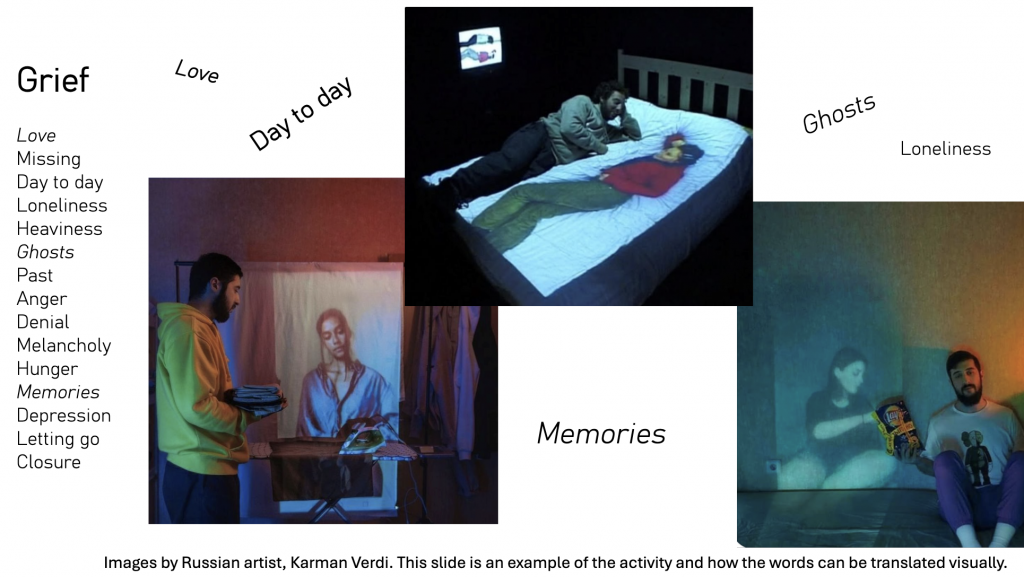Concept Visualization

The purpose of the session was to introduce participants to a technique that can be helpful when trying to visualize an idea or concept.
The session plan was structured as sated below:
- Introduction and context :5 minutes
- Activity part 1: 5 minutes
- Activity part 2: 5 minutes
- Discussion: 5 minutes
I wanted to teach something that was transferable to many different areas. I use this activity in both my creative and teaching practice, so I am confident teaching the activity, and have evidence to support its effectiveness in encouraging creative flow. This technique is also a good way to learn about the different cultural perspectives of the students, so I thought it could be useful for others to use in their practice.
The activity is simple, the starting point can be a theme, or a feeling, for the purpose of this exercise we used an object that the participants could see. I then asked them to come up with a series of words inspired by the object, instructing them to write whatever came to mind. Then, I asked them to pick one or two of the words and try and think of how they could be represented visually. This could be with a drawing or just an explanation.
I emphasized that there is no right or wrong way of doing the activity but to use it as a way to exercise their mind.
I gave examples to the participants, so they had a reference of what I was asking them to do.
For my first example, the object was: a set of Keys.
The words were: Open, Door, Home, Family, Safety, Lost, Trust, Secret, Code, Importance, Locked, Trapped.
The visualizations were:
Safety: A room that is warm with a comfortable chair and pictures of family.
Open: A field with a long horizon in the distance.
The session went pretty smoothly; however, I spent a little more time than planned in the introduction which left us with little time for the last part and only one of the participants was able to share.
The participants found the session fun, the feedback was positive, they found the activity was clearly explained, and they knew what they were meant to be doing. They found me giving them context on how I use this activity in my practice useful as it made them think of ways in which they could incorporate in their own teaching. However, they found themselves needing more time in each of the sections, they wanted to explore more of their object and how they could use it as inspiration. They also commented on perhaps offering more visual examples specifically of the visualizations as they were interested in seeing how it could translate to a theatre set or an image. I think time was the main challenge as this activity asks people to use their imagination and that is something that can take a bit of time to get going. I was also really looking forwards to seeing what everyone came up with, so I was disappointed that they didn’t all get the chance to share.
I enjoyed taking part in all the different sessions, they were all really playful and I learned really interesting and unexpected things.